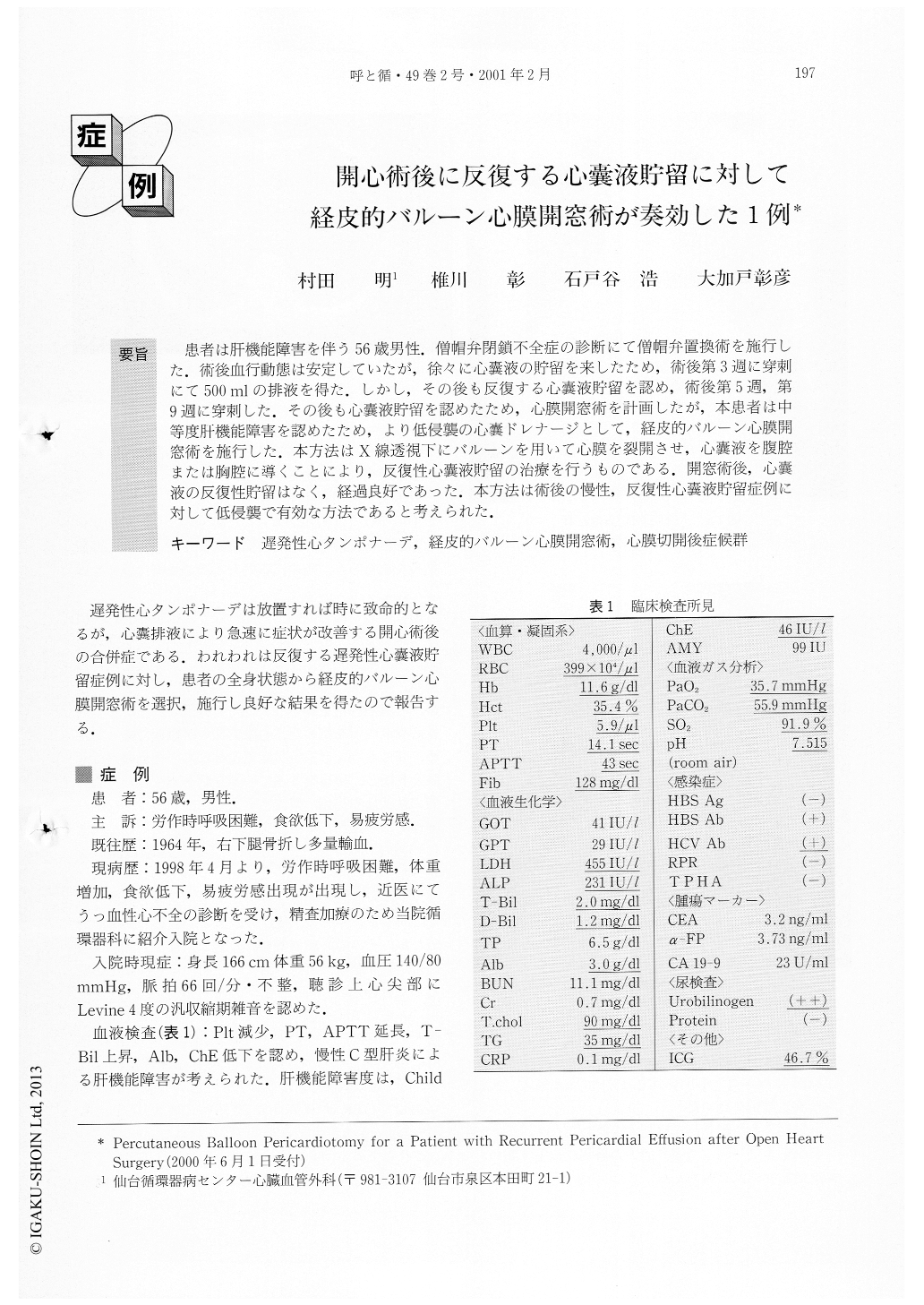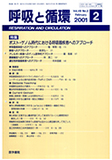Japanese
English
- 有料閲覧
- Abstract 文献概要
- 1ページ目 Look Inside
患者は肝機能障害を伴う56歳男性.僧帽弁閉鎖不全症の診断にて僧帽弁置換術を施行した.術後血行動態は安定していたが,徐々に心嚢液の貯留を来したため,術後第3週に穿刺にて500mlの排液を得た.しかし,その後も反復する心嚢液貯留を認め,術後第5週,第9週に穿刺した.その後も心嚢液貯留を認めたため,心膜開窓術を計画したが,本患者は中等度肝機能障害を認めたため,より低侵襲の心嚢ドレナージとして,経皮的バルーン心膜開窓術を施行した.本方法はX線透視下にバルーンを用いて心膜を裂開させ,心嚢液を腹腔または胸腔に導くことにより,反復性心嚢液貯留の治療を行うものである.開窓術後,心嚢液の反復性貯留はなく,経過良好であった.本方法は術後の慢性,反復性心嚢液貯留症例に対して低侵襲で有効な方法であると考えられた.
A 56-year-old gentleman with moderate liver dysfunction underwent mitral valve replacement after beingdiagnosed as having severe mitral valve regurgitation.Although the postoperative hemodynamics was stable recurrent pericardial effusion occurred. Because of theliver dysfunction (Child's classification B), percutaneous balloon pericardiotomy was carried out. Thisprocedure is performed to lead the pericardial effusionsfrom the pericardial cavity to the peritoneal or thepleural cavity. In our case, no recurrent pericardialeffusion had been observed after the procedure. It isconceivable that this procedure is an effective minimallyinvasive procedure for the recurrent pericardialeffusions after open heart surgery.

Copyright © 2001, Igaku-Shoin Ltd. All rights reserved.


